
Kia XCeed review 2022

Introduction
If you take a standard Kia Ceed hatchback, jack it up and add a bit of rugged off-road cladding, you get an XCeed.
The recipe is as simple as that – and it’s worked wonders for Kia so far.
It has sold over 130,000 XCeeds in Europe since the model’s launch around three years ago. What’s more, it’s by far the most popular model out of its similar siblings, the Ceed hatchback, Ceed Sportswagon estate and the ProCeed shooting brake.
The XCeed, then, is a family crossover SUV, sitting below the Niro and Sportage in the range. And now it’s had a mid-life facelift, albeit a modest one.
The makeover is mainly cosmetic, and, to the untrained eye, it looks very similar.
Select's rating score* - 3.3 / 5
At A Glance
At the front, new LED lights combine with a new grille to give a slightly more smiley appearance than before. Meanwhile, new bumpers, shaped with a defining crease, create two slits for air intakes at each side.
A cladding strip runs diagonally, connecting the air intakes to the lower grille. Then there’s more cladding running around the lower bits of bodywork, including the wheel arches, around the side of the car and thickening along the bottoms of the doors.
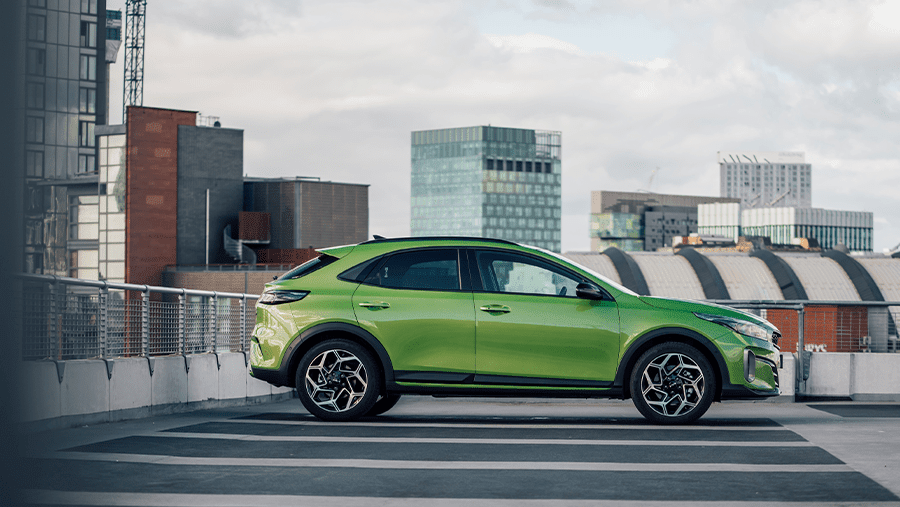
The rear of the XCeed now features diffuser-shaped bodywork along the bottom, with more cladding sitting just above it. At the same time, the rear lights wrap around the sides, and a roof spoiler overhangs the back windscreen.
Overall, the XCeed is a somewhat unusual shape, but it's good-looking, albeit nothing that’s going to get heads spinning in 'Exorcist' style.
However, in a world where the family hatchback’s historical dominance is being quickly left in the dust by SUVs, it fits in well.

Key Features
The XCeed is sold as two models – a petrol version and a plug-in hybrid.
The petrol is available in three trims at launch. The entry-level ‘2’ trim features 16-inch alloys, an eight-inch infotainment touchscreen with wireless Apple CarPlay/Android Auto, and cruise control. It also boasts four electric windows, a reversing camera, a leather steering wheel, and a faux leather gear lever.
The ‘3’ trim upgrades the alloys to 18-inches, while the touchscreen upgrades to 10.25-inches and adds SatNav. Rain-sensing wipers are added, along with heated front seats and steering wheel, privacy glass, a smart key, and an engine start/stop button. You also get a centre console storage box, sliding armrest, and an electronic parking brake.

The flagship GT-Line S gets a 12.3-inch digital instrument display, a panoramic sunroof with tilt and slide function and an automatic blind. The trim also houses black leather and suede seat upholstery, a wireless phone charger and an eight-speaker JBL premium sound system. Sports seats, a sports steering wheel and some exterior styling tweaks, including black mirrors, are also part of the package.
Another trim, GT-Line, is also being added soon, sitting between ‘2’ and ‘3’.
By contrast, the plug-in hybrid is only available in the '3' trim. This model is virtually identical to the petrol ‘3’ but features 16-inch alloys rather than 18-inches. Why? Well, it helps with ride comfort, given the PHEV is much heavier.

The petrol model features a 1.5-litre four-cylinder turbocharged engine, producing 160PS. It is fitted with a six-speed manual gearbox, although a seven-speed dual-clutch automatic will be added to the range at some point soon.
The plug-in hybrid, by comparison, features a 1.6-litre four-cylinder naturally aspirated engine combined with an electric motor. This happy union produces 141PS, and this XCeed version comes with a six-speed automatic ‘box.
Usually, having two power sources means plug-in hybrids are more potent than their non-hybrid counterparts, sometimes by a significant margin. But that’s not the case with the XCeed. So, we're intrigued to see how the hybrid feels, given its power deficit and the extra heft of the battery.
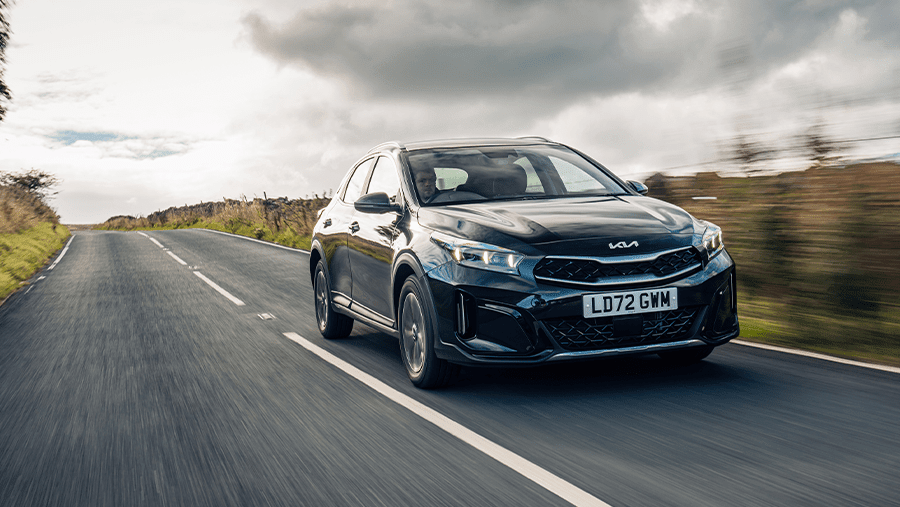
Range & Batteries
The plug-in hybrid version has an 8.9kWh battery.
That is enough to get nearly 30 miles of all-electric range, although you’ll need to keep the car fully topped up with electrical energy to get the maximum benefit. Need something with a bit more EV range? Check out our list of top 10 longest range electric cars of the year.
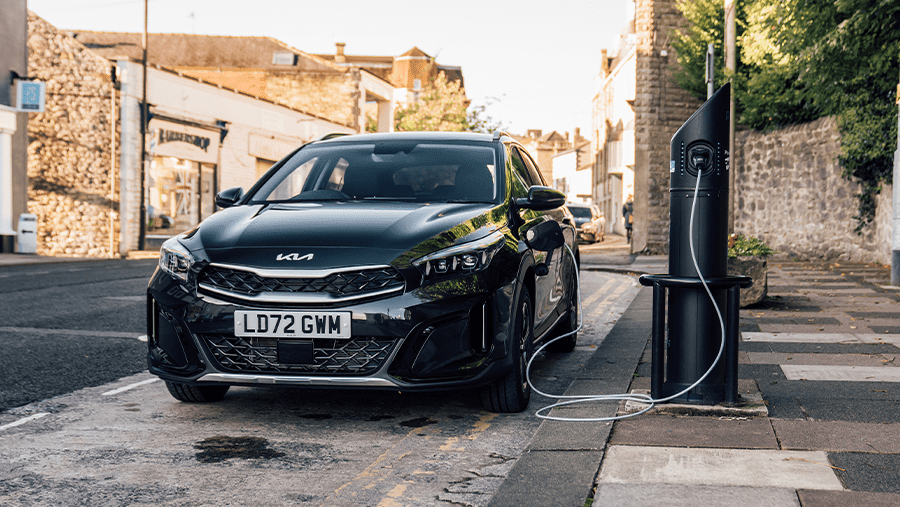
Performance & Drive
We have test driven both petrol and plug-in hybrid versions.
The acceleration isn’t mud off a stick brisk, and, certainly, at lower revs, it feels a bit of a grind to get any decent performance out of it. Nought to 60mph is dealt with in 8.7-seconds, but it's helped by the excellent manual gearbox, which is well-refined and changes smoothly.
The ride is comfortable, but, despite the XCeed having a softer suspension setup than the standard Ceed hatchback, it can feel firm over bumps, especially on larger 18-inch rims.
The PHEV and the entry-level petrol both come with 16-inch wheels, which are certainly an improvement. But they look too small given the car's raised ride height and aren't entirely transformative to the ride quality.
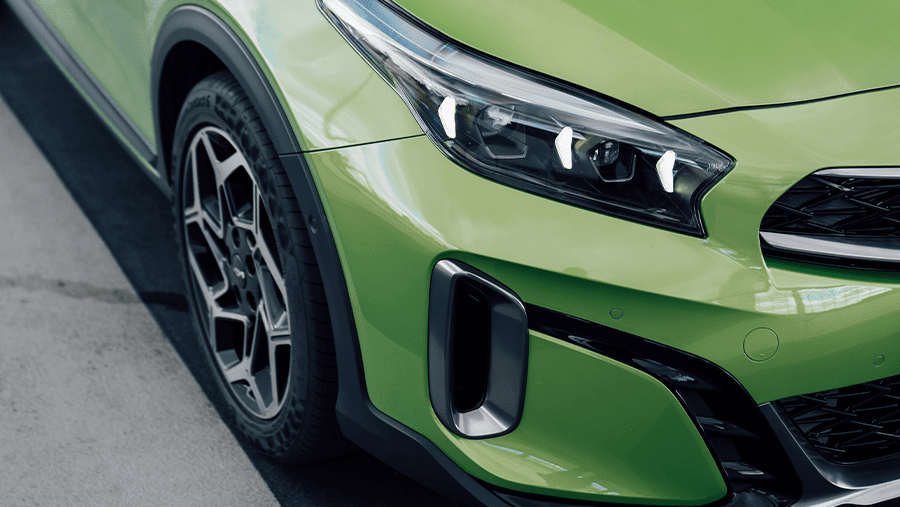
The PHEV is only available in the '3' trim, and, for those that opt for the non-hybrid, we reckon most people will still opt for the mid-range ‘3’ grade, too. Why? Well, it includes a host of upgrades, including a larger infotainment screen and SatNav.
A firmer ride usually means keener handling, and while the petrol is okay in the corners, the raised ride height means there’s body lean around bends. Indeed, we found judging a maximum entry speed quite challenging, as it’s hard to gauge grip levels.
For general driving, though, it’s perfectly acceptable and, on the whole, feels composed.
The Kia’s steering is okay but prone to oversteering halfway around a corner if you push things a little too much.

Around town or cruising on motorways, the ride feels settled, and it's as laudable to drive in heavier, rush-hour traffic as it is at 70mph.
There is little difference regarding performance in the PHEV either, with 0-60mph taking 10.6-seconds. And, like the petrol, it feels like it needs to be thrashed to get any actual performance out of it.
The automatic gearbox is okay, but keener drivers will prefer the slickness of the non-hybrid’s manual. Why? Well, the hybrid’s transmission isn’t staggeringly swift to change gear.
The suspension arrangement in the PHEV is slightly stiffer to deal with the extra bulk of the battery and electric motor.

As a result, the additional heft means it’s not as quick to respond to steering inputs. Therefore, it doesn’t feel as agile as the petrol model. So, while the non-hybrid is prone to oversteering, the PHEV is more prone to understeering.
However, despite the less nimble feel, it’s still tolerably good at taking corners, arguably limiting the body lean better than the petrol model and feeling more predictable.
Overall, the performance and handling in both models aren't likely to satisfy thrill seekers. But, for the average family, it does the job well.

Charging
The Kia XCeed’s battery only charges up at a maximum rate of 3.3kW. Therefore, the speed of the charger is virtually irrelevant, as just about any charger you plug it into will be capable of such a speed.
As a result, a 0-100% top-up of electrons takes around two-and-a-quarter hours. That is regardless of whether you're using a fast public charging point or a 7kW home wall box. To get the most out of every charge, be sure to consult our guide on picking your ideal electric car charger.
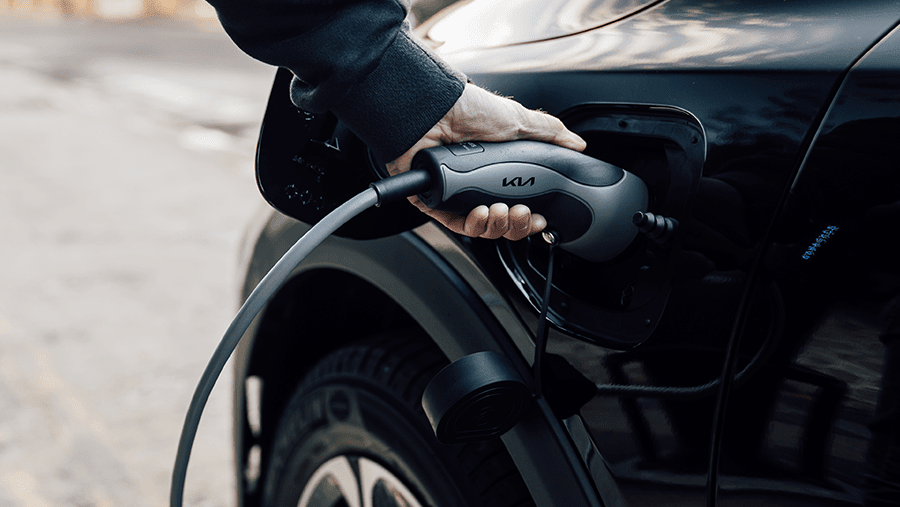
Running Costs & Emissions
The petrol version of the XCeed manages 44.8mpg and produces 143g/km of CO2 (although the entry-level ‘2’ grade achieves 46.3mpg and 137g/km of CO2).
By comparison, the plug-in hybrid claims 201.7mpg, producing just 32g/km of CO2. But you'll need to keep the battery charged before every journey to consistently achieve anything close to the fuel economy figure.
If you’re a company car user, then it’s pointless going for anything other than a plug-in hybrid or fully electric car. This is due to the substantial savings in Benefit In Kind offered to low-emissions vehicles.

The PHEV is in the 12% tax band, although some of its rivals are in even lower bands, so they offer even more substantial savings.
The low emissions mean the first year’s road tax costs just £10 and then £155 a year after that, compared with £230 for the first year, followed by £165 a year for the petrol.
In terms of ongoing maintenance, Kia has an impressive reputation for reliability, backed up by its industry-leading seven-year, 100,000-mile warranty.
Interior & Technology
The interior of the Kia XCeed is civilised and has a reasonably premium feel.
There is some silver trim to break up the dark greys of the dashboard and upholstery, while piano black plastic surrounds the gear lever.
Taken in isolation, the cabin looks pleasant, and everything seems well-designed.
However, the big drawback in the XCeed is to be found by comparing it with other Kias on the market. And, once you see some of the cabins in other new models, you’ll quickly realise the XCeed is lagging.

It is not bad and will be perfectly satisfactory for most, but compared with three of Kia’s other vehicles, the EV6, Niro and Sportage, the XCeed is easily the fourth best.
Despite this, Kia’s reputation for interior design is still maintained in the XCeed, with lots of supple-to-the-touch surfaces.
The infotainment screen is secured onto the dashboard, slightly angled towards the driver. Meanwhile, there are still plenty of physical buttons beneath it, including buttons and dials for the climate control system.

The infotainment system is notable, especially on the larger 10.25-inch screen, which you get with every variant bar the entry-level '2' trim on the petrol model.
Its display is crisp, the system responds promptly to inputs, and the menus are laid out intuitively.
You also get a USB-C port in the front and rear and an old-style USB-A port, while the GT-Line S petrol model also has a wireless phone charger.

Practicality & Boot Space
Finding a comfortable driving position is simple in the XCeed, with copious amounts of adjustment in the steering wheel and driver’s seat.
The PHEV gets standard seats which are acceptable. But the petrol edition gets upgraded sports seats that are more comfortable, suiting drivers regularly facing hour-long commutes or long-distance driving.
It is disappointing that this isn't offered in the PHEV, given plug-in hybrids are more cost-effective in the long term if you're a high-mileage driver.

There is plenty of headroom and legroom in the front. But the sloping roofline in the rear means there’s less headroom in the back than you’d find in a standard Ceed.
Rear legroom isn’t astounding either, especially if there’s someone tall occupying the seat in front of you.
The GT-Line S version’s cabin is noticeably brighter thanks to the inclusion of a panoramic sunroof. It is a nice feature but less pleasant if you're a tall rear-seat passenger, as it eats further into the available headroom.
Boot space in the petrol XCeed is 426 litres, which is 31 more than you get in the standard Ceed hatchback. But this figure drops to just 291 litres in the plug-in hybrid.

This expands to 1,378 litres (1,243 litres in the PHEV) with the rear seats folded down in a convenient 40:20:40 split. This is more versatile than the 60:40 split you get in most cars.
Lifting cumbersome items in and out is a bit of a faff, though, as there’s a large boot lip. However, the boot floor is adjustable, while loading weightier items isn't made any easier because the seats don't fold flat.
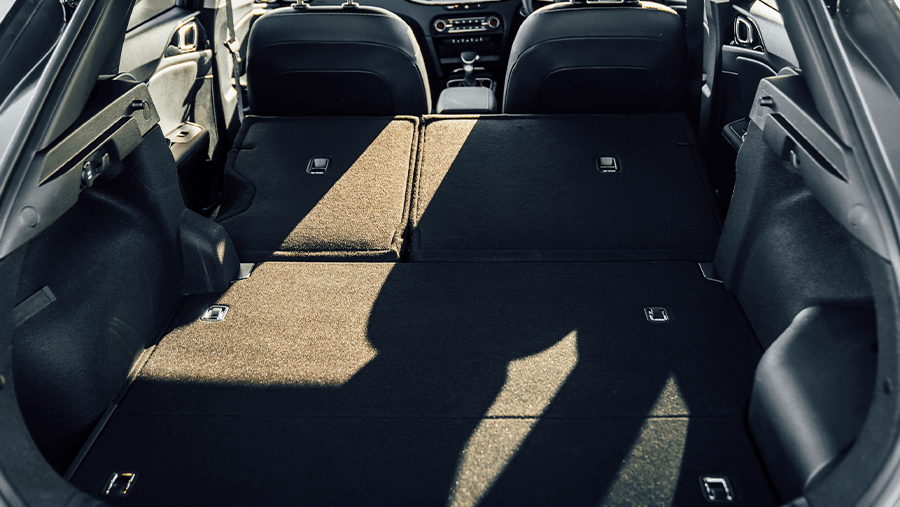
Safety
The XCeed hasn’t been analysed by crash-test boffins at Euro NCAP yet. But that’s because the safety rating of the standard Ceed has been used instead.
That was assessed in 2019 and got a four-star rating, scoring 88% for adult occupants, 85% for children and 68% for safety assists.
All models get forward collision avoidance assistance for cities, pedestrians and cyclists, as well as cruise control and a speed limiter.
You need to go for the top-of-the-range GT-Line S to get blind spot collision warning. This is a bit disappointing, as this means you can't have it in the plug-in hybrid, which is only available in the '3' trim.
You also get an intelligent speed limit warning in the GT-Line S.
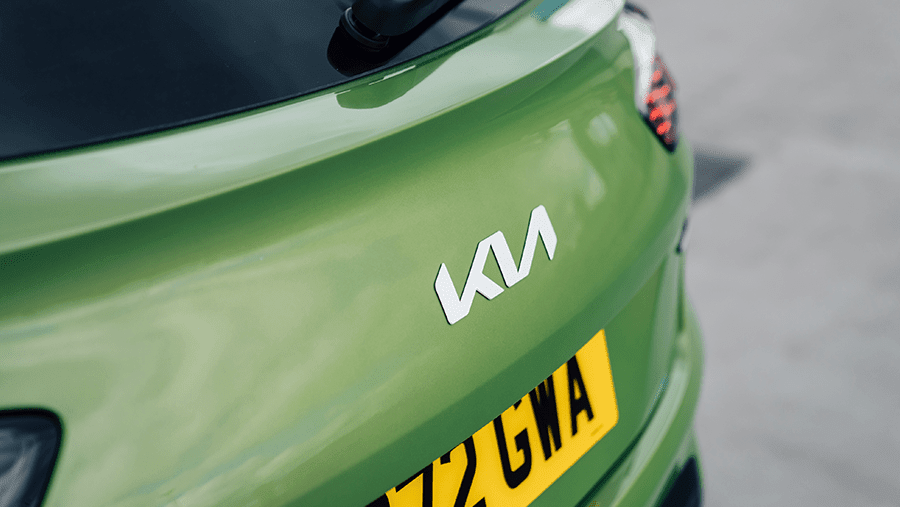
Options
Unless you want your Kia XCeed to be coloured in 'Splash Lemon', you have to fork out several hundred pounds for a choice of green, black, dark grey, light grey, silver, red or blue.
One thing we love about Kia is the number of optional extras it markets and the sheer breadth of what’s on offer.
For example, while you can acquire a set of 16-inch alloys, silver door mirror caps or mudguards, you can also choose from a series of more left-field choices.
Fancy a fluorescent yellow safety vest? It is yours (it costs a fiver at the time of writing, in case you were wondering).
Suddenly need a roll-top waterproof backpack? No problem – it’s yours.

Need a coat hanger for your business suit which conveniently attaches to the back of the front seat? Yep. Kia even has those available.
And, if you’re stuck for a Kia keyring, the automaker has got you covered for that, too.
The list is seemingly endless, although it includes valuable things such as floor mats, tow bars, coloured LED lights for the footwell, and other traditional extras, such as roof racks.
You can even obtain ‘go-faster racing stripes’ in white or red.

Rival Cars
Other motors you'll want to look at include the Volkswagen T-Roc, Renault Arkana and the Toyota C-HR.
We also recommend checking out the Seat Leon, which is more engaging to drive.
A Skoda Karoq is roomier but in a similar price bracket.
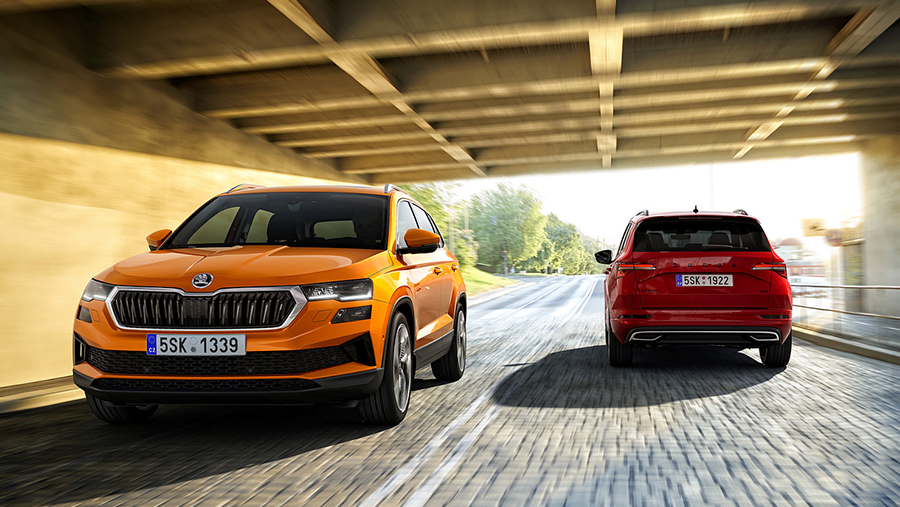
Of course, Kia itself offers several vehicles that are worth looking at. These include the rest of the Ceed family and the Niro and Sportage SUVs.
Kia's Stonic is a little smaller than the XCeed but will appeal to those who want something that looks off-roady and rugged.
If you fancy something more towards the premium side of the market, a BMW X2 is also worth considering. But it’s more expensive to lease!

Verdict & Next Steps
Overall, the XCeed is okay. Although, if you’ll pardon the obvious, corny pun, it ticks most people’s boxes without really ‘XCeeding’ any expectations.
The plug-in hybrid is suitable if you need to cut running costs or are a company car leaser. But when it comes to Benefit In Kind tax, some challengers can offer more significant savings.
What's more, it's slightly more expensive than the standard Ceed hatchback without offering a vast amount more to justify the cost.
For that reason, unless you need an extra 31 litres of boot space in the XCeed, we’d probably stick with the Ceed.
On the other hand, we might be tempted to spend a little bit more and choose a Niro or Sportage. These models offer more practicality, a nicer interior, even more technology, and a better driving experience.
That is not to say the XCeed is none of the above. On the contrary, it is still reasonably practical; the interior is good, and it's got a worthy amount of safety kit.
It is just that, when stacked up against its larger siblings, they all offer the same things but sprinkle quite a bit more on top.
Where to next?
View our latest Kia XCeed Leasing Deals - from just £263.34 per month inc VAT**
Looking for a great leasing deal? Check out our incredible range of Special Offers
New Hatchback? Read our latest Car Reviews and find the right model for you
Want to know more about leasing? Take a look at our comprehensive Leasing Guides
Interested in everything motoring? Why not catch up on all the latest Car Leasing News.
*Score based on Select’s unique meta score analysis, taking into account the UK’s top five leading independent car website reviews of the Kia XCeed
**Correct as of 17/11/2022. Based on 9 months initial payment, 5,000 miles over a 48 month lease. Initial payment equivalent to 9 monthly payments or £2,370.06 Ts and Cs apply. Credit is subject to status.






















